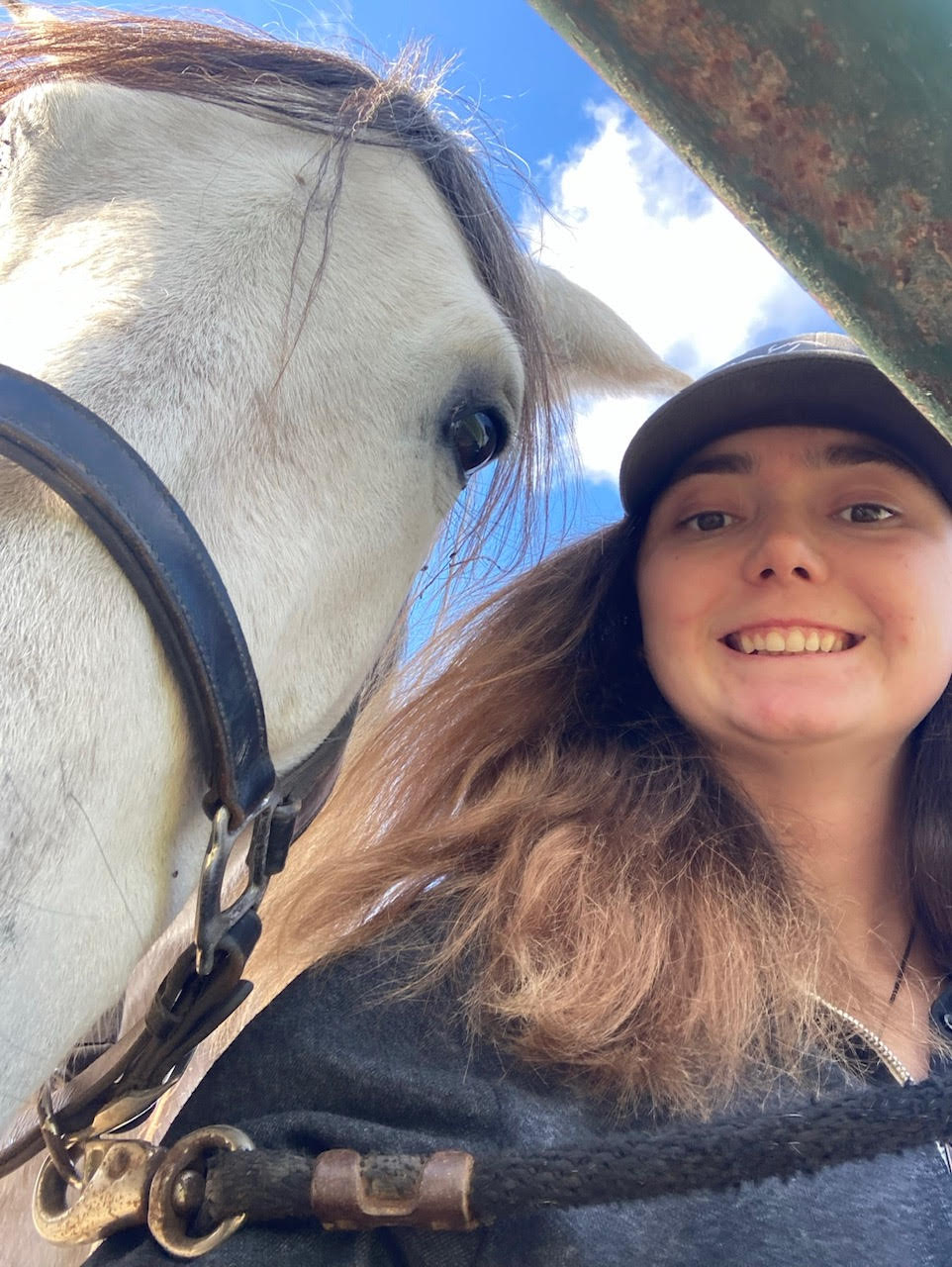What Is The Far Right All About

What Is The Far Right All About? Read More


What Is The Far Right All About? Read More

Interview With Author Gary Shteyngart
.Shteyngart has recommended A brilliant look at Ukraineś history through a very personal lens Read More

Rescue Your Money
by Ric Edelman
It’s really simple.
Isn’t it?
Step #1:
Work hard your entire adult life, save $100,000 or more and invest it wisely in a variety of sectors: CD’s, bonds, real estate, the stock market (hopefully mostly blue-chip stocks)
Step #2:
Wait to reap the rewards of your patience and hard work.
Now let’s cut to a scene where an elderly couple looks at their online balance sheet and realizes that the 100k they invested in 5-year CD’s is now worth about 65 thousand dollars.
What happened?!
Didn’t take inflation into account?
Transaction costs?
Bought too late, sold too soon?
OR, and this may be one of the main roots of portfolio failure, you just didn’t know what you were doing?
On November 14th 2012, a headline in Forbes Magazine warned: ‘ market sell-off after Obama’s re-election no accident; recession coming’. The article stated: ‘Now that the election is over stocks are dropping with no bottom in sight. This is no accident, given investors’ fears of higher taxes and continued big-spending…we are headed for a recession.’
…the very next day after that article appeared…November 15th, 2012, a post-election stock rally began. As you may recall, stocks rose throughout 2013, with the S&P 500 posting again nearly 30% for the year—it’s best in 18 years. The Dow Jones Industrial Average ended 2013 of 26.5%, and the tech-focused NASDAQ a whopping 38%. The increases continued, though to a lesser extent, through 2014.”
Author Ric Edelman doesn’t make you wait until the end of the book to let us in on the Big Secret to making a profit on your investments rather than seeing them fall prey to the ravages of time and taxes—like the couple just mentioned. He tells us right at the git-go, in the first few pages of this book.
That’s the beauty of Rescue Your Money. We are not called on to wrap our heads (or beat them against) around the outermost reaches of economic theory or the inner workings of financial markets so that we will be capable of holding our own in a discussion with hedge fund managers or high-earning MBAs.
Instead, the author offers clear, simple and practical suggestions about how to navigate the market and see your investments prosper. Rescue Your Money, with its emphasis on a smart, steady and patient approach to investing, may be particularly useful for younger investors, since they have plenty of time to work out their investment learning curve.
The fact of the matter is:
If you´re a Millennial or member of Gen Z, thereś a good chance youŕe an investor.
If you are a Millennial woman, thereis a good chance youŕe doing better in the Market(s) than your male contemporaries:
¨…73% of Gen Z investors, 66% of millennial investors and 67% of investors ages 18 to 40 overall owning stocks.¨
– ¨Millennials and Gen Zers Are More Invested in the Stock Market Than Other Financial Assets, Including Crypto¨
By Yaёl Bizouati-Kennedy on Yahoo.com..11/04/21
¨There’s good news for the growing share of women pursuing investing: Despite their lack of confidence, women investors tend to outperform men.
Just over two-thirds of women now invest outside of retirement, up from 44% in 2018, according to Fidelity Investments’ 2021 Women and Investing Study, which polled 1,200 women. Broken down by generation, that share is even greater among Millennials, at 71%. Among Gen Xers, it’s 67%, and among Baby Boomers, it’s 62%.¨
– ¨With more money saved, Millennial women show greater interest in investing¨
– Caitlin Mullen, Bizwomen contributor (https://www.bizjournals.com/bizwomen).
Sound interesting?
Get that cup of cold brew coffee going and read on.
Edelman lets us know right away what the Iron Law of Investing is:
Buy Low and Sell High.
Okay. Now we know what to aim for…optimize every penny and look for the right opportunity. But to do that, you have to be ahead of the game. The first step—and this is where the author really earns his keep, in letting us know which assumptions and preconceptions are keeping us from making our stock picks work—is to get rid of those attitudes that are keeping us down. Most importantly, we need to:
Get Real!
That means don´t get carried away with useless KPIś (key performance indicators).Youŕe not trading percentages. You’re trading money! As the author reminds us, if you think your investments are successful because they’ve lost only 30% of their value while the market as a whole has lost 35%—even though you lost money—you really need to consider (or at least auditing a class in ) Investing 101. And that’s what this book is; a return to basics and an invitation to act from a place of patience, persistence and a willingness to do your due diligence rather than succumb to the gambling fever that leads so many investors to lose their hard-earned cash in financial markets.
The problem is, according to the author, that so many of the millions of people who have become investors—thanks to the ease and availability of online trading —allow themselves to be seduced by the twin devils of fear and greed. Instead of buying when the price is right, they wait till the investment becomes front page news. Then they jump on the bandwagon after the price has gone way up. Then, when the price starts to seriously dip, they sell—at a loss—in a fit of panic
Rescue Your Money stresses fundamentals, What makes this book stand out is its insistence on the need for discipline and the willingness to constantly learn for anyone who wants to succeed as an investor. His starting point seems to be this: if your perspective on something’s not quite right, then everything you do will be subject to failure—no matter how wisely you intend to act. Underlying his take on what it takes to be a successful investor is this: for little fish to reap a profit from their investments, they have to think and act like big fish as much as possible. The brave heart of the warrior has its place in all things that involve risk. Still, it is the cold, clear head of the well-trained and highly disciplined soldier that you want to guide you through the rough and tumble of the financial market. Or, as someone said about what it takes to make it as an online trader: “Whatever else you have going for you, when it comes time to execute a trade, you have to be able to click on that key(s) or that mouse button without hesitating or letting your emotions get the best of you.”
The wise old (and in some cases not-so-old) owls of the market are just waiting in the wings with cash in hand to gobble up those severely depreciated bargain stocks that will return a great big profit after they’ve recovered from the downturn. They are able to spot those buy-in opportunities because they’ve done their homework. If their stocks look like they’re tanking or going to tank they will have an exit strategy in place that will spare them losses beyond what they’re ready to bear.
His success as an investor is not based on a rare and uncanny ability to guess better than most when the top of a bull market or a bear market’s low point. In fact he goes deep by giving us some useful advice on something that is basic to investing This is where he mentions the two “truths”— as these fallacies are so often regarded by unwary investors— that keep people from investing successfully.
False) Truth #1:
Stock Prices Rise and Fall
In order to make this work for you, you have to be able to time the market. To do so investors “follow fads, trust the media, rely on so-called experts, or make big bets on blue chip stocks or hot sectors.” (Ch. 4 {mention title of ch. 4})
Actual Truth #1:
Over the course of a 66 year period (1956-2015) and 11 downturns, the market swung back boldly into the black, gaining somewhere between 56 and 229% of its value after losing somewhere between 14 and 52% of it. The market is not the roulette table at Bellagio’s. In fact, looking at your portfolio every day (or even worse, several times a day) is a big mistake says Mr. Edelman. In fact, according to research, people who do so tend to do worse than those who do not!
The solution?
Don’t panic and sell. Instead, how about working with the 15 year cycle as analyzed by Ibbotson Associates?
False Truth #2:
The stock market is risky, volatile and unpredictable.
Actual Truth #2:
Yes it is (risky, volatile and unpredictable), if you want a quick return. On the other hand, the NYSE’s value today is 100 x greater than it was 100 years ago.
Rescue Your Money is too deep and too chock full of information to present it all here, but there is one thing that is basic and involves a very interesting suggestion meant to guide us into the right “take” on buying and selling:
Now author Edelman has something interesting to say about making your portfolio grow (in Rescue Your Money ch. )
Sell High
Buy Low
What’s going on here?!
Right in the first chapter of the book he tells us to buy low and sell high. Is he now telling us to do the same thing but different? Has the author decided to forsake the serious business of market analysis for the lols of the brain-teaser market?
No. Not at all.
What he means (ch. ) is. Just as you would do well to consider the cost of your most basic raw material for your backyard garden – seeds, fertilizer etc. – you would likewise do well to consider the source of your investment income. As in all things, planning ahead in a systematic way will get you a lot farther than acting on the spur of the moment.
Selling high and buying low are two sides of the same coin; or, if you prefer, the x and the y of a mathematical equation. If you treat selling high as a means of raising capital for further investment, then you are helping to solve one of the biggest problems that individual investors face—having a steady and reliable source of income that will enable you to be ready to buy right at the right time with income that comes from your investment rather than from your pocket (just like the biggest institutional investors…aka big fish)!
Like fellow investor and investment consultant Robert Kiyosaki, Ric Edelman is that rarest of combinations: a thinker, a doer and a teacher. Heś helped to make billions for his clients, has the ability to take something that is hardly an exact science and explain it as clearly as possible, and emphasizes the need to correct wrong attitudes and assumptions, since they underlie much of the failure of your average investor to see his or her investments return a profit.

Writing and horses…any connection there?
There is definitely a connection between writing and my equine activities. I sat on my first horse when I was about 4 and continued for the next 17 years. As a child, I always used to fantasize about being this big-time trainer with a ton of horses and clients. Of course, I know now how expensive horses actually are and how unrealistic my dreams were, but these fantasies were what sparked my interest in writing because I had no way of voicing these dreams so they became stories.
Many of my stories contain an equine aspect as it is a topic I am very familiar with and enjoy writing about.
When and how did you get the “writing itch?” Are / were any family members, writers? Did you have a love affair / was fascinated by words at a very young age? Were there any events, such as school awards or positive reactions to something you wrote, that boosted your self-confidence as a writer?
As far as a big inspirational story that sparked my “writing itch” I don’t have one. As a kid, I always had a book in my hand. I’d rather sit on the porch and read a book than head over to the neighbors and play. That being said, the neighbors were also half a mile down the road on another farm. I grew up most of my childhood in Ottawa, Illinois before moving to Naperville in the middle of third grade.
I did have this drive in high school that lasted for about 3 months where I just couldn’t put down my pen. Every class I was writing, even in my automotive class I was focused on an early book of mine. Never in my life had I ever felt anything like it. It was like I was there, in my own story, living through the eyes of my characters. It seemed to have died down after I finished and abandoned the book, but now and again I will get that extreme itch, but it never lasts as long as it once had.
In school, I was never one to express my writing to anyone. I took a couple of writing classes and had my own stories going on in the background, but my main extracurricular focus was music and horses. I entered college as a Music Education major, developing relationships with orchestra teachers across the country. It was only when COVID hit two years ago that I began to further develop my writing career.
Authors…who speaks to you; who inspires you?
As a child, my all-time favorite author was Erin Hunter. She wrote and continues to write the series “Warrior Cats.” Her books were the reason I began writing stories of my own. She knew just the right words to use to lead you into the woods where the cats dwelled. Of course, the name Erin Hunter is just a pen name used by Victoria Holmes, Kate Cary, Cherith Baldry, Inbali Iserles, Tui T. Sutherland, and Rosie Best, but as a kid—and even now—I believe Erin Hunter was the best children’s author of all time.
When and/or how did your current novel begin to take shape in your mind?
I talked about my first novel (the one I abandoned) in high school, but I knew that one was never going to be anything other than a good idea. The novel that I aspire to get published and out there into the world began about two years ago at the beginning of COVID. Some of the characters in the novel are inspired by my music teachers at the College of Dupage. A friend once told me that most writers develop their characters based on real people in their lives and I couldn’t think of better choice of real life influences.
This novel is a slowly developing story meant to draw the audience slowly and subtly into the lives of the characters. When I first started thinking about this book I wanted the main conflict to be something that a lot of people can relate to—dealing with loss.
Have you lived or spent a lot of time in a college town or on or around college campuses? Does the academic world hold a particular attraction for you?
I spent my first two years at the College of Dupage as a music major with a minor in writing. In attending this college I commuted and spent the rest of my time working two jobs. The next year and a half I spent at Elmhurst University taking online classes due to the pandemic. It is only during my last semester at EU that I get to experience life at a University. That being said, I very much enjoy the academic world and cannot see myself stopping anytime soon. Some people can’t wait to graduate and get out of the classroom, but I enjoy sitting down, listening to the stories of the past and looking forward to what has yet to come.
How has it been for you personally, working on your first novel? What has it been like to break the ice and do some serious writing; getting in the zone and tapping into your imagination? Have you always preferred fiction to nonfiction? Do other genres interest you…screenplays, poetry, song lyrics, plays, etc.
Personally, working on my first novel is hard. There are so many ways that it can go, so many paths for my characters to take and I have to choose the right one that my audience and I will enjoy. The topic and theme of my writing is always of a serious nature. Non-fiction has never been much of an interest of mine, mostly because I am a dreamer. Every experience I have had, there is always a spot in the back of my head where I imagine all the different ways that it could have gone, and sometimes they can be extremely unrealistic.
My interest in other genres is minimal. I’ll mess around with some poetry and screenplays, but they never capture my full attention.

A Review of Turtles All The Way Down By John Green

Turtles All The Way Down
Alison Flood‘s interview with John Green for The Guardian
There is a scene late in US author John Green’s new novel, Turtles All the Way Down, where his protagonist, Aza Holmes – a bright, troubled teenager, as Green’s heroines generally are – goes through an ordeal so distressing it is difficult to read. Aza has obsessive compulsive disorder, and the “tightening gyre” of her thoughts has taken over. Green catapults his reader right into the middle of Aza’s desperate mental state as she becomes increasingly panicky over the possibility of being infected with the bacterium C. diff – “do you want to die of this do you want to die of this because you will you will you will you will” – eventually scooping handfuls of hand sanitizer into her mouth, gagging and vomiting as her mother tries to stop her.
Green, who has OCD himself, says it was “very hard to write”. “I wrote it right at the last, in the last revision. That’s as close to my experience as I could get.”
Turtles All the Way Down, Green’s seventh novel and one that is long awaited by his massed armies of fans – he has more than 5 million followers on Twitter – is his “most personal”, says the young adult writer, “in the sense that it’s not entirely confined to the past for me. Having OCD is something that is an ongoing part of my life and I assume will probably be a part of my life for the rest of it.”
Green has “had this obsessive thinking problem” since childhood. For a long time it was hard “to talk directly about it, and I felt a lot of embarrassment”; part of writing it into his fiction was a desire “to find some kind of form or expression that would shake it out from within me and allow me to look at it”.
Aza – or Holmesy, as she is known to her best friend, Daisy – is Green’s narrator. The novel opens as the girls hear on the radio about the $100,000 reward which has been offered for a fugitive billionaire, Russell Pickett. Aza, it turns out, used to know his son Davis because they’d “gone to Sad Camp together … this place down in Brown County for kids with dead parents”. Daisy convinces Aza that they’ll be able to find Pickett and claim the reward, and the wannabe detectives hop into Aza’s old canoe and paddle down the river to the Pickett mansion.
While the novel is filtered through Aza’s perspective, OCD is only one theme. There’s also Daisy’s burgeoning fame as a Star Wars fan fiction writer, Pickett’s decision to leave his fortune to his pet tuatara (a kind of large reptile) and, of course, romance, friendship and high school.
It has been nearly six years since Green topped the charts with his sharp, funny, moving story of the romance between two teenagers with cancer, The Fault in Our Stars. That novel was inspired by the time Green spent working as a chaplain in a children’s hospital after university; it has now sold more than 23m copies, been adapted into a hugely successful film, and seen Green named one of the 100 most influential people by Time magazine.
When writing my second book, I was like, ‘I have no idea how to write a book.’ I have to figure it out anew each time
No pressure, then, for the follow-up. “In one way it gave me the luxury of time, the ability to take as long as I wanted,” says Green. There were “a few abandoned novels along the way that got kind of scrapped for parts”. But “it’s also true that I felt very scared of writing, because I was in the shadow of this success”, he says, admitting to being “super nervous” about the next novel’s reception. “I remember thinking when I was writing my first book, ‘The great thing if I get the opportunity to do this again will be that I will then know how to write a book.’ Then when it came time to write my second book, I was like, ‘I have no idea how to write a book,’ and each time that was the case. I think that’s part of the reason my books have come out relatively slowly. I seem to have to figure it out anew each time…”

 Renowned Writer Tripped on Magic Mushrooms…Paul Stamets, a mycologist I had come to visit in Washington State’s Olympic Peninsula to go mushroom hunting, had a gift he wanted to give me.
Renowned Writer Tripped on Magic Mushrooms…Paul Stamets, a mycologist I had come to visit in Washington State’s Olympic Peninsula to go mushroom hunting, had a gift he wanted to give me.
Originally entitled What It’s Like to Trip on the Most Potent Magic Mushroom Read More

 “Buddhism and Relationships”….an association of two terms that are not often thought of in the same breath! With “The Four Noble Truths of Relationships,” Susan Piver has given us a fascinating look at modern day relationships in the light of Buddhist scripture and thought. Read More
“Buddhism and Relationships”….an association of two terms that are not often thought of in the same breath! With “The Four Noble Truths of Relationships,” Susan Piver has given us a fascinating look at modern day relationships in the light of Buddhist scripture and thought. Read More

Three books about the new Cold War… “Not since the days of Ronald Reagan has Russia played such a prominent role in US political life. After Donald Trump’s shock victory – greeted in the Russian parliament with cheers and champagne – came accusations of Russian meddling in the US electoral process…” Read More

Amazon Authors Beware…Richard Mulder’s experience on Amazon is something that many published authors may not have experienced. Nonetheless, it can happen to anyone. Read More

 Your Favorite Books……….by Erin French
Your Favorite Books……….by Erin French
Books – whether we grew up listening to them be read to us or felt drawn to read them at a young age – have provided us with insights that are not always attainable in a world full of movie-goers and non-readers. As time goes by, a select number of books have provided not only knowledge, but also inspiration. Read More